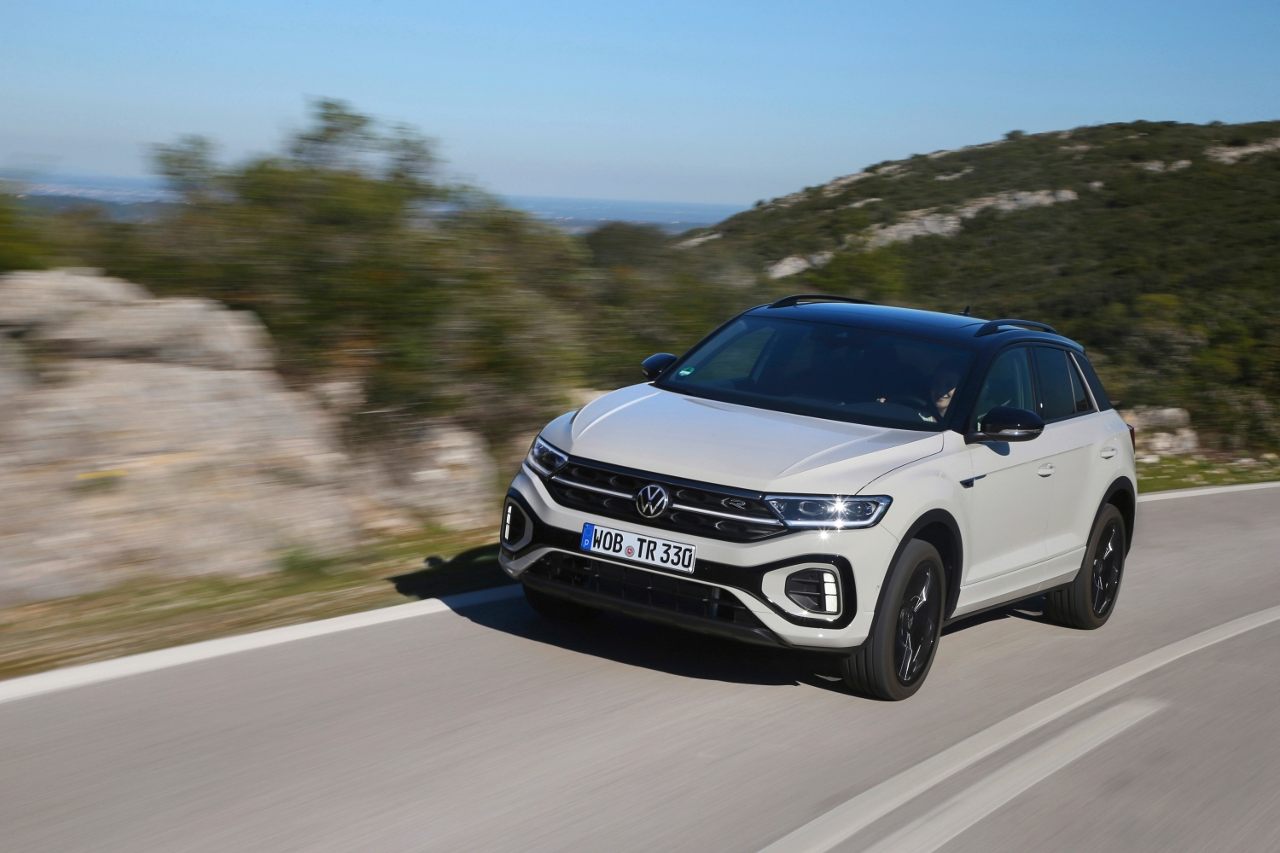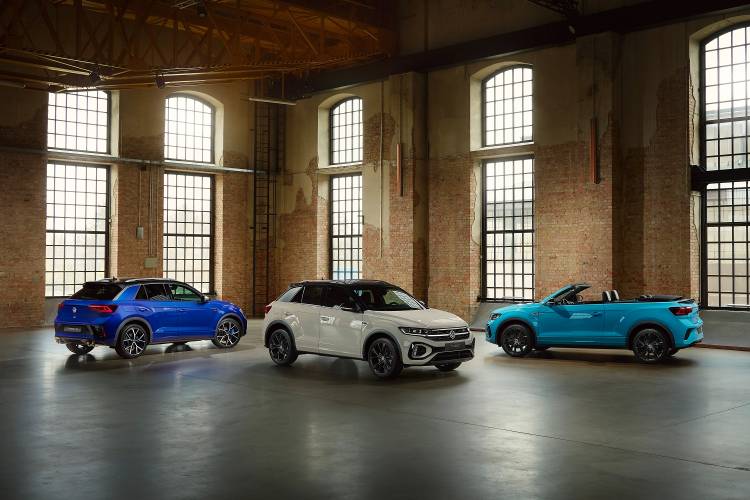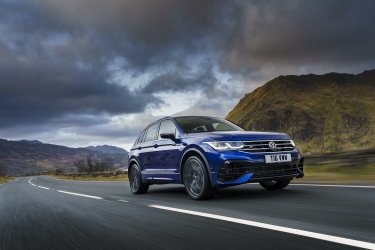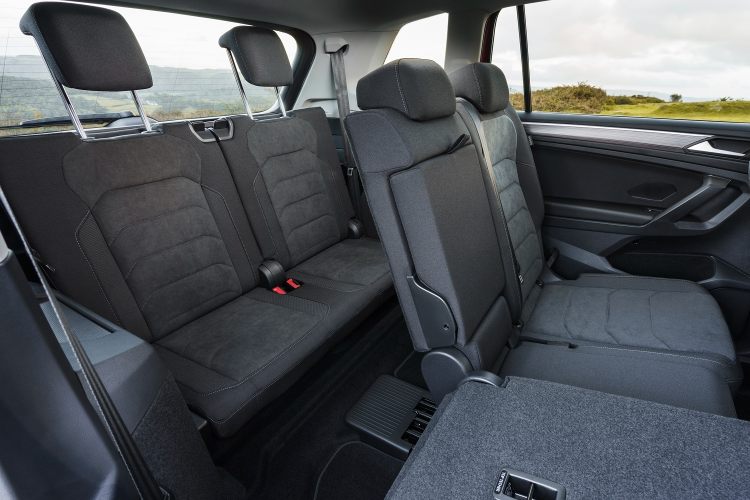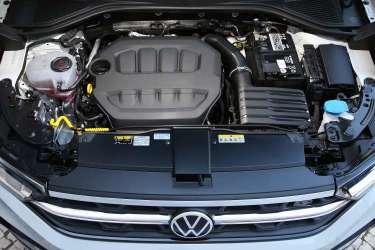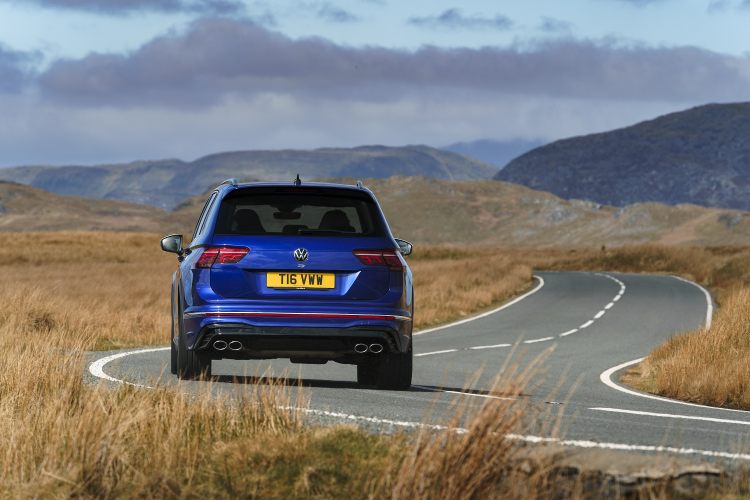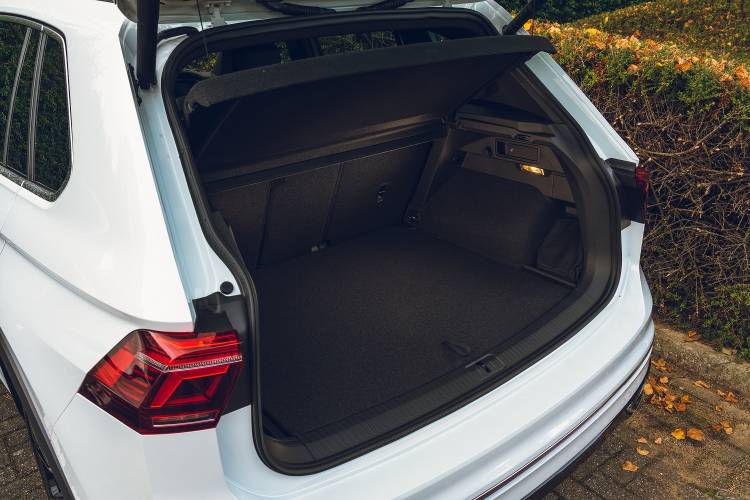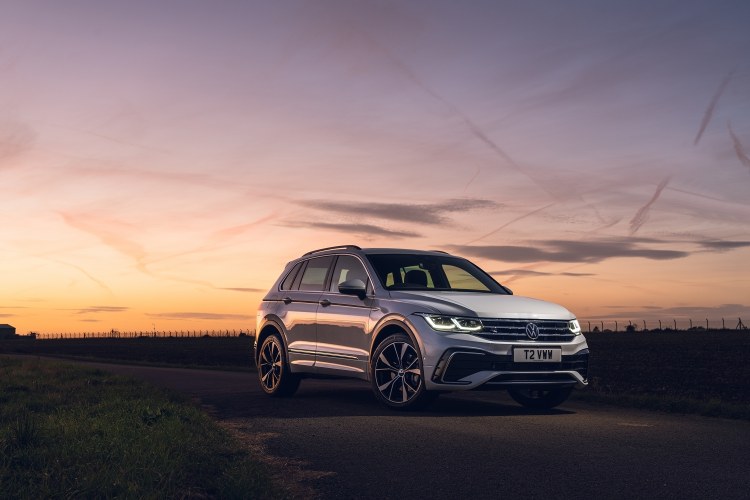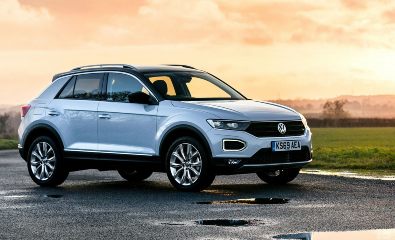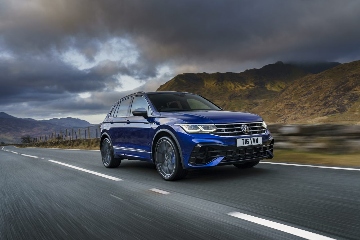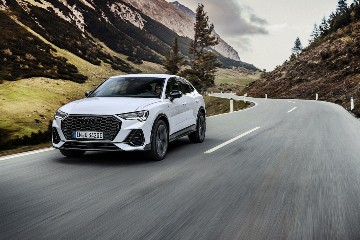Volkswagen’s SUV line-up is extensive and has recently been bolstered by the addition of the Taigo – a coupe version of its smallest crossover, the T-Cross. However, further up the VW chain are 2 midsized crossover-SUVs, called the T-Roc and the Tiguan. So what are the key differences between them, and which is the best one for you to choose? Read on to find out more!
Which Is Newer The Tiguan Or The T-Roc?
It’s the T-Roc. The Tiguan hoved into view in 2007, becoming Volkswagen’s 2nd SUV after the earlier introduction of the larger Touareg 4x4. However, the current model of Tiguan is the 2nd-generation car, which launched in 2016. The T-Roc, meanwhile, didn’t appear in showrooms at all until 2017, and it was facelifted and given new technology at the end of 2021, ready for the 2022 model year. The Tiguan, incidentally, received its midlife update in 2020.
Both SUVs share much in common, as you’d expect from a manufacturer like Volkswagen which majors in platform-sharing – not just among its own model lines, but obviously those of the other car companies it owns like Audi, SEAT and Skoda. Thus, the T-Roc and Tiguan both sit on variations of the MQB chassis and they both mainly use 4-cylinder turbocharged engines, although the smaller T-Roc does have the option of as 3-cylinder powerplant if you want it.
They also both have range-topping high-performance ‘R’ derivatives, making 300hp in the case of the T-Roc and 320hp for the Tiguan, while they further come in 2 distinct bodystyles each – the T-Roc is available as a regular 5-door SUV and then an unusual 2-door Cabriolet model, whereas the regular 5-door Tiguan is a 5-seat SUV, while the stretched Tiguan Allspace is a 7-seat family carrier.
View our latest T-Roc leasing offers or VW Tiguan Leasing deals.
What Are The Main Rivals For These 2 Volkswagens?
For the T-Roc SUV, it sits in a congested marketplace including other VW Group products which share its mechanicals – namely, the Audis Q2/Q3, the SEAT/Cupra Ateca and the Skoda Karoq – as well as talented competitors including the Peugeot 3008, the Ford Kuga, the Nissan Qashqai, the Hyundai Tucson, the Kia Sportage, the Toyota C-HR and even more. However, there is no obvious rival for the T-Roc Cabriolet – Range Rover did briefly do an Evoque Convertible for the Mk1 model, but that hasn’t carried over into the Mk2 and it was considerably more expensive than the T-Roc Cabriolet is anyway.
The Tiguan is a harder one to pigeonhole, in some respects. Volkswagen’s attempt to shoulder its way upmarket would mean the company would like you to consider it as an alternative to a Mercedes GLA or GLC, or a BMW X1, X2 or even an X3 (at a push), but it could also conceivably be thought of as a slightly pricier, higher-quality rival to any of the cars listed above as T-Roc rivals. The Tiguan Allspace, though, is a little easier to place. It sits among other ‘5+2’ or full 7-seat SUVs, such as the Skoda Kodiaq, Nissan X-Trail, Peugeot 5008, SEAT Tarraco, Land Rover Discovery Sport, Hyundai Santa Fe and Kia Sorento.
Can I Have Either Of These As A 7-Seater?
Out of all 4 variants of T-Roc and Tiguan, only the Tiguan Allspace comes with 7 seats, although the 3rd row is better suited to smaller children and so the VW SUV is better thought of as a ‘5+2’ machine in that regard.
For full-sized 7-seat machines, either the Hyundai Santa Fe or Kia Sorento are the obvious alternatives at a similar price point, but many people spending the sort of money required for a tidy Tiguan Allspace tend to look even further upmarket for something like an Audi Q7 or a Volvo XC90, in all honesty.
What Are my Engine Choices In The T-Roc And Tiguan Families?
They use broadly the same engines, gearboxes and traction layouts, but there are some key differences – such as there is no 3-cylinder option in the Tiguan family, whereas there is in the T-Roc, and also the larger SUV has an eHybrid plug-in hybrid (PHEV) variant whereas the smaller model does not.
Starting with the T-Roc SUV, there are 3 main-series petrol engines, 2 diesels and then the punchy 2.0 TSI 300hp unit of the R. Things kick off with a 110hp 3-cylinder 1.0-litre TSI petrol engine, paired exclusively to a 6-speed manual transmission. Above that, there’s a 1.5-litre TSI with 150hp and a choice of 6-speed manual or 7-speed DSG transmissions, and then a 2.0-litre TSI with 190hp and the 7-speed DSG only. For the diesel line-up, a solitary 2.0 TDI unit is offered with either 115- or 150hp, with only the latter available with the 7-speed DSG transmission. Above all of these is the R, which has a 300hp/400Nm 2.0 TSI 4-cylinder turbocharged petrol engine and a 7-speed DSG ‘box.
In terms of 4Motion all-wheel drive, it is an option on T-Roc 2.0 TDI 150 models and is standard-fit on both the 190hp TSI and the flagship R. Where 4Motion is fitted, either optionally or as the default specification, it is always paired with a 7-speed DSG – you cannot have 4WD and a manual gearbox together, so all manual T-Rocs are front-wheel drive only.
The Cabriolet has a much trimmed-down engine line-up compared to the SUV, with only the 1.0 110hp TSI and the 1.5 TSI 150hp provided. You can have a 7-speed DSG on the latter but 4Motion AWD is not offered on any T-Roc Cabriolet, nor is the powerful R drivetrain.
Moving to the Tiguan and Allspace, again there is a slight split on which engines are offered, but every single Tiguan/Allspace sold – up to and including the R – has a 4-cylinder engine of some sort; there are no V6s and not 3-pot units to go at.
The regular 5-seat Tiguan SUV has the most engine choice of all. It comes with the 1.5 TSI unit as seen in the T-Roc, but it is available in both 130- and 150hp formats, with only the latter able to be optioned-up with DSG. On the diesel side of things, the familiar 2.0 TDI is also pressed into service, delivering either 150hp and the option of 4Motion AWD, or 200hp and 4Motion as standard. At the top of the tree is the 320hp/420Nm 2.0 TSI in the R. All models of Tiguan come with a 7-speed DSG transmission as standard, with the exception of the 1.5 TSIs – and even then, the 150hp version is only offered with a 6-speed manual at a lowly Life specification, so you can take it as read that pretty much all Tiguan Mk2s are going to be automatics.
Added to the Tiguan line after its facelift in 2020 was the eHybrid PHEV. This pairs a 1.4-litre TSI 4-cylinder turbo petrol engine to an electric motor and 10.4kWh lithium-ion battery pack, resulting in peak outputs of 245hp/400Nm. The eHybrid has a 6-speed DSG, not the more advanced 7-speed unit of other models, and it is front-wheel drive only, without the option of 4Motion.
The Tiguan Allspace has a subtly different drivetrain line-up, more along the lines of the SEAT Tarraco than anything. It has a 150hp 1.5 TSI, with either a 6-speed manual or a 7-speed DSG, and then 190- and 245hp 2.0 TSI petrols, both of which only come with 4Motion and 7-speed DSG transmissions. It then has the 2.0 TDI in 150hp specification and a choice of 3 slightly different flavours – 6-speed manual and front-wheel drive, 7-speed DSG and front-wheel drive, or 7-speed DSG and 4Motion. There’s also the 200hp TDI with DSG and 4Motion as standard, but there is no R model nor is there a PHEV option yet.
Volkswagen claims every model of T-Roc, from the basic 110hp SUV to a 150hp Cabriolet, will deliver upwards of 40mpg combined, with the diesels touching 60mpg in some specifications, while even the 300hp R is said to do 33.2mpg overall. The bigger Tiguan models tend to hover more in the 30-50mpg bracket, even for the diesels, and the Allspace is a little juicier again, but while the Tiguan R is said to do 28.3mpg official, we easily coaxed mid-30s out of it during a week on test.
The absolute eco-champ is, of course, the Tiguan eHybrid. Volkswagen claims 156.9-176.6mpg from it in its various specifications and 38-43g/km of CO2, with up to 30 miles of electric-only driving possible. Getting such numbers from it, though, will require – as with all PHEVs – both regular mains charging cycles and for the vast majority of your driving to be conducted on the electric motor alone, meaning you’ll only be able to do 25-30 miles a day in the VW.
What Are They Like To Drive?
Neither of them is particularly exciting to drive, but as it’s physically smaller and lighter, it’s the T-Roc which feels wieldier and more agile in the corners. This ties in with its sportier, coupe-like exterior appearance, plus it also makes it easier to park and manoeuvre in towns than the Tiguan – and especially the even-longer Tiguan Allspace.
That said, the comfort levels on the Tiguan are superior. It has a more refined and subdued passenger compartment at motorway speeds, and its ride quality is generally excellent. For regular long-distance cruising, the Tiguan is definitely the one to go for.
But, without wishing to look like we’re contradicting ourselves, there are 2 models in these VW SUV lines which are exciting to drive – and they are the T-Roc R and the Tiguan R. For T-Roc Cabriolet and Tiguan Allspace buyers, bad news: you can’t have these exciting high-performance versions in either bodystyle. They’re reserved only for the T-Roc SUV and the 5-seat Tiguan.
Yet they’re well worth checking out if you want a super-rapid, super-stylish SUV. These 2 use the same ‘EA888’ 2.0-litre 4-cylinder turbocharged petrol engine, which drives all 4 wheels on both (through 4Motion all-wheel drive) via means of a 7-speed DSG dual-clutch transmission. The only difference is that the Tiguan R, which is bigger and heavier than the T-Roc R, has a slightly more potent iteration of this drivetrain: it packs 320hp and 420Nm, whereas the T-Roc R has to ‘make do’ with 300hp and 400Nm. Nevertheless, it’s the lighter T-Roc which is marginally quicker from a standstill to 62mph, clocking 4.8 seconds compared to the Tiguan’s 4.9-second time. Both are limited to a 155mph maximum.
These 2 hot SUVs drive very well, with sharp steering, impressive chassis balance and searing performance, but they face tough alternatives from various quarters – such as the Audi SQ2 and BMW X2 M35i (more for the T-Roc R than the Tiguan), and then the Cupra Formentor 310 TSI for the Tiguan R. The strange thing here is that the Cupra is ostensibly the same vehicle underneath as the Tiguan R, yet somehow the Spanish company’s engineers seem to have tuned more handling fun out of the Formentor’s platform than VW’s mob did for the R. Shame.
Is The Tiguan More Practical Than The T-Roc?
Yes, it has a 615-litre boot as a 5-seater model, rising to 1655 litres with the 2nd row of seats folded down. That compares to 445 litres in the T-Roc, falling to 392 litres in any model with 4Motion AWD (including the R); or 1290 to 1237 litres respectively with its rear seats folded down. A Tiguan Allspace, for comparison, has 230 litres of boot space with all 7 seats in play, rising to 700 litres in 5-seat configuration and then 1755 litres at its maximum. The T-Roc Cabriolet sacrifices the most practicality on the altar of style, its boot measuring just 284 litres; about the same as some city cars these days.
Counting in its favour, though, a T-Roc (at 4236mm long) is 273mm shorter than a Tiguan and a massive 492mm – that’s almost half-a-metre – more compact than a Tiguan Allspace, so if you’ve only got a smaller garage in which to park your SUV at nights, the T-Roc is the obvious choice.
Which One Should I Choose?
It entirely depends on what you want from your SUV. If you’re just after style and something easy to park, go for a T-Roc – or a T-Roc Cabriolet, if you’re particularly daring. But if you need more space and/or seating, the Tiguan is definitely the stronger selection.
Both will give you a satisfying Volkswagen ownership experience, but as the Tiguan is a little more expensive and grander overall, and it seems to have a broadly better level of interior finishing than the T-Roc, it’s the one which feels more luxurious to live with. Therefore, we’d just err on the side of the larger VW SUV in this head-to-head battle.
RATINGS
Volkswagen T-Roc = 7/10
Volkswagen Tiguan = 8/10
Take the winner for a ride with our Volkswagen Tiguan deals below, or check out more of our handy car leasing guides to help you find your next perfect lease.

